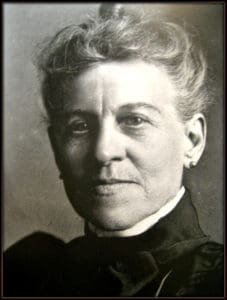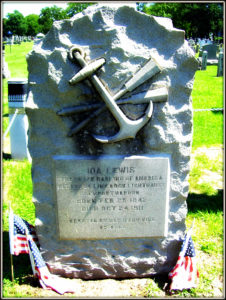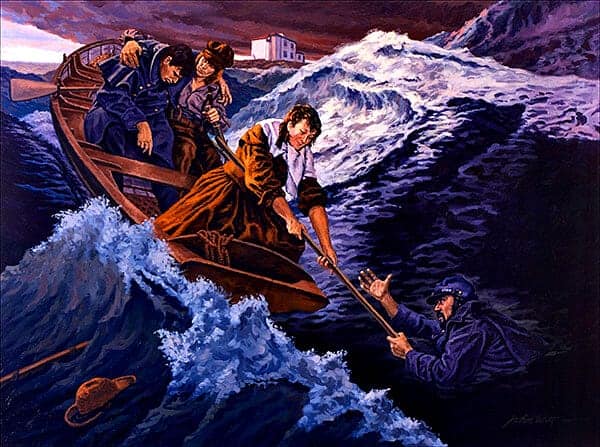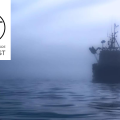On July 18, 2017, after battling returning champions Sarah Burn and Patricia Gerli on the open seas for the better part of a week, Maddie Hawkins and Kimmie Leonard stood victorious on the podium at the U.S. Junior Women’s Doublehanded Championship.
The championship, held this year at the Annapolis Yacht Club, has been a mainstay in the sailing community since 1995 and each year the winners are presented with the famed Ida Lewis Trophy. Outside of the sailing community, few know of her prominence, which is why she is this month’s featured mariner.
 Ida Lewis was born into a maritime family in the coastal town of Newport, Rhode Island, in 1842. Her father, Hosea Lewis, was a Revenue Cutter Captain who was placed in charge of the Lime Rock Light in 1854. After her father suffered a debilitating injury when she just a young girl, she took on more responsibility at the lighthouse and eventually was placed in charge in 1879.
Ida Lewis was born into a maritime family in the coastal town of Newport, Rhode Island, in 1842. Her father, Hosea Lewis, was a Revenue Cutter Captain who was placed in charge of the Lime Rock Light in 1854. After her father suffered a debilitating injury when she just a young girl, she took on more responsibility at the lighthouse and eventually was placed in charge in 1879.
During her time as lighthouse keeper, she officially saved the lives of thirteen people and unofficially, as many as thirty-six. Known to be the fastest oarsman in Newport, Lewis earned the Gold Lifesaving Medal, after she successfully rescued two soldiers who fell through the ice near Fort Adams.
In the fifty-four years she served the Lime Rock Light, she became a role model to those in the lifesaving business, an inspiration to women and a national celebrity. For this, she entertained many visitors, including President Ulysses S. Grant, who was vacationing in the area and insisted on meeting the heroine. Of all the honors she received, perhaps the most memorable was when Lewis was declared “The Bravest Woman in America” by The American Cross of Honor Society.
In 1911, at the age of sixty-nine and while still on the job, Lewis succumbed to a stroke. In her memory, the Lime Rock Light was renamed Ida Lewis Lighthouse and the area is now home to the Ida Lewis Yacht Club, which hosts multiple sailing regattas each year.
Thus far, I’ve discussed women who demonstrated the qualities of courage in adversity and overcoming bias, and while Ida Lewis absolutely displayed those, she also exemplified service above self. There is a famous saying, spoken by Patrick Etheridge of the now-defunct U.S. Lifesaving Service, that states, “The Blue Book says we’ve got to go out and it doesn’t say a damn thing about having to come back.“[1]. In her line of work as a lighthouse operator, Lewis was obligated to come to the aid of those in distress and she  consistently risked her own life to do so. Much like the individuals that have given their lives during times of war in order to save their comrades, Lewis gave little thought to her own self-preservation and took the path less traveled to make a difference. It is for this reason that when Hawkins and Leonard stood victorious and held up the Ida Lewis trophy back in July, they also held up a legacy of sacrifice as well.
consistently risked her own life to do so. Much like the individuals that have given their lives during times of war in order to save their comrades, Lewis gave little thought to her own self-preservation and took the path less traveled to make a difference. It is for this reason that when Hawkins and Leonard stood victorious and held up the Ida Lewis trophy back in July, they also held up a legacy of sacrifice as well.
Thanks for visiting the site and I hope you’ll check back in for next month’s feature!
For more information, on the U.S. Junior Women’s Doublehanded Championship, or information on national sailing programs for The U.S., Canada and the sailing world’s governing body, please click on the associated links!
[1] https://www.history.uscg.mil/Frequently-Asked-Questions/








Great article! Thanks for keeping this piece of history alive